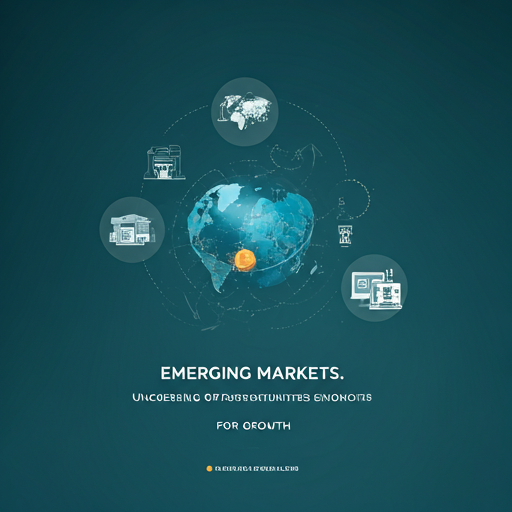Introduction to Wealth Management in the Cryptocurrency Era
The Evolution of Wealth Management
Wealth management has undergone significant transformation in recent years, particularly with the advent of cryptocurrency. This evolution reflects a broader shift in client expectations and investment strategies. As digital assets gain traction, wealth managers are compelled to integrate these new financial instruments into their portfolios. The rise of cryptocurrencies has introduced a new layer of complexity to asset allocation. Many investors are eager to explore this innovative frontier.
Moreover, the increasing acceptance of blockchain technology is reshaping traditional financial paradigms. This technology enhances transparency and security, which are critical in wealth management. Clients are more informed and demand tailored solutions that align with their risk profiles. It’s essential to recognize that adaptability is key in this dynamic environment.
Furthermore, the regulatory landscape surrounding cryptocurrencies is still developing. Wealth managers must navigate these complexities to provide sound advice. This requires ongoing education and a proactive approach to compliance. The stakes are high, and informed decisions are crucial. As the market evolves, so too must the strategies employed by wealth managers. The future of wealth management is undoubtedly intertwined with the digital asset revolution.
Impact of Cryptocurrency on Traditional Wealth Management
The emergence of cryptocurrency has significantly influenced traditional wealth management practices. This impact can be observed in several key areas, including asset diversification, client engagement, and risk assessment. Wealth managers are now tasked with integrating digital assets into their investment strategies. This requires a nuanced understanding of both cryptocurrencies and traditional financial instruments. Many clients are eager to explore these new opportunities.
Additionally, the volatility associated with cryptocurrencies presents unique challenges. Wealth managers must develop robust risk management frameworks to address these fluctuations. A few critical considerations include:
Understanding market dynamics
Assessing client risk tolerance
Implementing hedging strategies
Regularly reviewing asset performance
These factors are essential for maintaining portfolio stability. Furthermore, the regulatory environment surrounding cryptocurrencies is evolving. Wealth managers must stay informed about compliance requirements. This is crucial for building client trust and ensuring long-term success.
Moreover, the demand for transparency and education has increased among clients. Investors seek clarity on how digital assets fit into their overall financial plans. This shift necessitates enhanced communication strategies. Wealth managers must provide comprehensive insights into the benefits and risks of cryptocurrency investments. The landscape is changing rapidly, and staying ahead is vital.
Understanding Client Demographics
Understanding client demographics is crucial for effective wealth management, especially in the context of cryptocurrency. Wealth managers must recognize the diverse backgrounds and preferences of their clients. This knowledge allows them to tailor investment strategies that align with individual goals. Different age groups exhibit varying levels of interest in digital assets. For instance, younger investors often show a greater affinity for cryptocurrencies compared to older generations.
Key demographic factors to consider include:
Age
Income level
Investment experience
Risk tolerance
These elements significantly influence investment decisions. Additionally, clients’ motivations for investing in cryptocurrencies can vary widely. Some seek high returns, while others prioritize portfolio diversification. It is essential for wealth managers to engage in active dialogue with clients. This fosters a deeper understanding of their unique needs.
Moreover, the rise of social media has changed how clients access information. Many rely on online platforms for investment insights. This shift necessitates that wealth managers adapt their communication strategies. They must provide clear, concise information that resonates with clients. The landscape is evolving, and understanding client demographics is vital for success.
Importance of Adapting to Change
Adapting to change is essential in the rapidly evolving landscape of wealth management, particularly with the uprise of cryptocurrency. Wealth managers must remain agile to respond effectively to market fluctuations and client demands. This adaptability is not merely beneficial; it is imperative for maintaining competitive advantage. Clients expect their advisors to be knowledgeable about emerging trends. They want insights that reflect current market conditions.
Several factors underscore the importance of this adaptability:
Technological advancements
Regulatory changes
Shifts in client preferences
Market volatility
Each of these elements can significantly impact investment strategies. For instance, technological innovations can enhance portfolio management and client engagement. Wealth managers must leverage these tools to optimize performance. Additionally, staying informed about regulatory developments is crucial for compliance. This ensures that clients receive sound advice within legal frameworks.
Moreover, underwtanding shifts in client preferences allows wealth managers to tailor their services. Clients increasingly seek personalized investment solutions that align with their values. This trend highlights the necessity for wealth managers to evolve continuously. The ability to adapt is not just an option; it is a requirement for success.
Current Trends in Wealth Management
Rise of Digital Assets
The rise of digital assets has transformed the landscape of wealth management, presenting both opportunities and challenges. Wealth managers are increasingly incorporating cryptocurrencies and other digital assets into their portfolios. This shift reflects a growing recognition of the potential for in high spirits returns. Many investors are eager to diversify their holdings with these innovative financial instruments.
Several trends are emerging in this space. First, institutional adoption of digital assets is on the rise. Major financial institutions are beginning to offer cryptocurrency-related services. This legitimizes digital assets in the eyes of traditional investors. Second, the development of regulatory frameworks is gaining momentum. Clear guidelines can enhance investor confidence and market stability.
Additionally, the demand for education around digital assets is increasing. Clients seek comprehensive information to make informed decisions. Wealth managers must provide insights into the risks and benefits associated with these investments. This requires ongoing research and adaptation to market changes. The landscape is evolving rapidly, and staying informed is crucial. Wealth managers must embrace this change to meet client expectations effectively.
Integration of Blockchain Technology
The integration of blockchain technology into wealth management is reshaping traditional practices. This technology offers enhanced security and transparency, which are critical in financial transactions. Wealth managers are increasingly utilizing blockchain to streamline operations and reduce costs. By automating processes, they can improve efficiency and accuracy. Many clients appreciate these advancements.
Moreover, blockchain facilitates real-time tracking of assets. This capability allows for better portfolio management and reporting. Clients benefit from increased visibility into their investments. Additionally, the use of smart contracts can automate compliance and reporting requirements. This reduces the potential for human error.
Furthermore, the growing interest in decentralized finance (DeFi) is noteworthy. DeFi platforms enable users to engage in financial transactions without intermediaries. This trend challenges traditional wealth management models. Wealth managers must adapt to these changes to remain relevant. They need to understand the implications of blockchain on investment strategies. The landscape is evolving, and staying informed is essential for success.
Focus on Sustainable Investing
The focus on sustainable investing has gained significant traction in wealth management. Investors are increasingly prioritizing environmental, social, and governance (ESG) criteria in their decision-making processes. This shift reflects a broader societal demand for responsible investment practices. Many clients seek to align their portfolios with their values.
Sustainable investing encompasses various strategies, including negative screening and impact investing. Negative screening involves excluding companies that do not meet specific ethical standards. Impact investing, on the other hand, aims to generate measurable social or environmental benefits alongside financial returns. This dual focus is appealing to a growing number of investors.
Moreover, research indicates that sustainable investments can outperform traditional ones over the long term. This challenges the misconception that ethical investing sacrifices returns. Wealth managers must stay informed about ESG trends and metrics. They need to provide clients with comprehensive insights into sustainable investment opportunities. The demand for transparency in this area is rising. Clients want to understand the impact of their investments. This trend is reshaping the wealth management landscape.
Personalization and Client-Centric Approaches
Personalization and client-centric approaches are becoming essential in wealth management. Clients increasingly expect tailored solutions that reflect their unique financial goals and values. This trend emphasizes the importance of understanding individual client needs. Wealth managers must engage in active listening to gather relevant information.
To achieve personalization, wealth managers utilize advanced data analytics. This technology allows them to analyze client behavior and preferences effectively. By leveraging these insights, they can create customized investment strategies. Many clients appreciate this level of attention.
Additionally, the rise of digital platforms facilitates enhanced client engagement. These platforms provide clients with real-time access to their portfolios and performance metrics. This transparency fosters trust and strengthens client relationships. Wealth managers must also prioritize regular communication. Frequent updates and consultations help clients feel valued and informed.
Moreover, the focus on holistic financial planning is gaining momentum. Clients are looking for comprehensive strategies that encompass all aspects of their financial lives. This includes retirement planning, tax strategies, and estate planning. Understanding the full picture is crucial for effective wealth management.
Challenges Facing Wealth Managers
Regulatory Uncertainty
Regulatory uncertainty poses significant challenges for wealth managers in today’s financial landscape. As governments and regulatory bodies grapple with the implications of emerging technologies, such as cryptocurrencies, the rules governing these assets remain fluid. This unpredictability complicates compliance efforts for wealth managers. They must navigate a complex web of regulations that can vary by jurisdiction. Many find this environment stressful.
Moreover, the lack of clear guidelines can hinder investment strategies. Wealth managers may hesitate to recommend certain assets due to potential legal repercussions. This cautious approach can limit clients’ opportunities for growth. Additionally, the evolving nature of regulations requires continuous education and adaptation. Wealth managers must stay informed about changes to avoid compliance pitfalls. This can be time-consuming and resource-intensive.
Furthermore, regulatory uncertainty can impact client trust. Clients expect their advisors to provide sound, compliant advice. If wealth managers appear uncertain about regulations, clients may question their expertise. This can lead to strained relationships and potential loss of business. Therefore, proactive communication about regulatory developments is essential. Wealth managers should reassure clients of their commitment to compliance. This transparency can help maintain trust in a challenging environment.
Market Volatility and Risk Management
Market volatility presents significant challenges for wealth managers, requiring effective risk management strategies. Fluctuations in asset prices can create uncertainty for both clients and advisors. Wealth managers must develop robust frameworks to mitigate these risks. This involves assessing the potential impact of market changes on client pogtfolios. Many clients feel anxious during volatile periods.
To address these challenges, wealth managers often employ several strategies:
Diversification across asset classes
Regular portfolio rebalancing
Use of hedging techniques
Continuous monitoring of market conditions
Each of these strategies plays a crucial role in managing risk. Diversification helps spread exposure, reducing the impact of any single asset’s poor performance. Regular rebalancing ensures that portfolios remain aligned with clients’ risk tolerance and investment goals. Additionally, hedging techniques can protect against adverse market movements.
Moreover, effective communication is vital during periods of volatility. Wealth managers should provide clients with timely updates and insights. This transparency can help alleviate concerns and reinforce trust. Clients appreciate when their advisors proactively address market conditions. By maintaining open lines of communication, wealth managers can foster stronger relationships. This approach is essential for navigating the complexities of market volatility.
Client Education and Awareness
Client education and awareness are critical challenges for wealth managers. Many clients lack a comprehensive understanding of financial products and market dynamics. This knowledge gap can lead to unrealistic expectations and poor investment decisions. Wealth managers must prioritize education to empower their clients. Informed clients make better choices.
To address this challenge, wealth managers can implement various strategies. First, they can offer educational resources, such as webinars and articles. These materials should cover essential topics like investment strategies and risk management. Second, personalized consultations can help clarify complex concepts. Clients often appreciate tailored explanations.
Additionally, regular communication is vital for fostering awareness. Wealth managers should provide updates on market trends and portfolio performance. This transparency builds trust and encourages client engagement. Clients are more likely to ask questions when they feel informed.
Moreover, utilizing technology can enhance educational efforts. Digital platforms can facilitate interactive learning experiences. Clients can access information at their convenience. This flexibility is essential in today’s fast-paced environment. By focusing on education, wealth managers can strengthen client relationships and improve overall satisfaction.
Technological Adaptation and Cybersecurity
Technological adaptation and cybersecurity are pressing challenges for wealth managers today. As financial services increasingly rely on digital platforms, the risk of cyber threats grows. Wealth managers must implement robust cybersecurity measures to protect sensitive client information. A single breach can lead to significant financial and reputational damage. Many clients are concerned about their data security.
To address these challenges, wealth managers should adopt a multi-layered security approach. This includes encryption, firewalls, and regular security audits. Additionally, employee training on cybersecurity best practices is essential. Staff must live aware of potential threats, such as phishing attacks. Awareness can significantly reduce vulnerabilities.
Moreover, staying updated with technological advancements is crucial. Wealth managers need to integrate innovative tools that enhance client experience. However, this requires ongoing investment in technology and training. Clients expect seamless digital interactions. Therefore, wealth managers must balance technological adoption with security measures.
Furthermore, regulatory compliance adds another layer of complexity. Wealth managers must ensure that their technology meets industry standards. This can be resource-intensive but is necessary for maintaining client trust. By prioritizing both technology and cybersecurity, wealth managers can navigate these challenges effectively.
Strategies for Adapting to Client Needs
Developing Comprehensive Investment Strategies
Developing comprehensive investment strategies is essential for meeting client needs effectively. Wealth managers must first assess each client’s financial goals and risk tolerance. This personalized approach allows for tailored investment solutions. Many clients appreciate customized strategies that align with their objectives.
To create these strategies, wealth managers often utilize a diversified portfolio approach. This involves spreading investments across various asset classes, such as equities, bonds, and alternative investments. Diversification helps mitigate risk while aiming for optimal returns. Additionally, regular portfolio reviews are necessary to ensure alignment with changing market conditions.
Moreover, incorporating client feedback is crucial in refining investment strategies. Wealth managers should maintain open lines of communication to understand client preferences better. This engagement fosters trust and encourages clients to share their concerns. Furthermore, staying informed about market trends and economic indicators is vital. Wealth managers must adapt strategies based on these insights.
Finally, utilizing technology can enhance the investment strategy development process. Advanced analytics tools can provide valuable data-driven insights. This enables wealth managers to make informed decisions that benefit their clients. By focusing on comprehensive strategies, wealth managers can effectively address diverse client needs.
Enhancing Client Communication and Engagement
Enhancing client communication and engagement is vital for wealth managers. Effective communication fosters trust and strengthens relationships. Wealth managers should prioritize regular updates on portfolio performance and market trends. Clients appreciate timely information.
Utilizing multiple communication channels can improve engagement. Email newsletters, webinars, and personalized meetings are effective methods. Each channel serves different client preferences. Wealth managers must adapt their approach based on client feedback. This responsiveness shows clients that their opinions matter.
Moreover, incorporating technology can streamline communication efforts. Client portals allow for real-time access to account information. This transparency empowers clients to stay informed. Additionally, using data analytics can help tailor communication strategies. Wealth managers can identify which topics resonate most with clients.
Furthermore, encouraging client participation in decision-making can enhance engagement. Wealth managers should invite clients to share their goals and concerns. This collaborative approach fosters a sense of partnership. Clients are more likely to feel valued and understood. By focusing on effective communication, wealth managers can better meet client needs and expectations.
Leveraging Technology for Better Insights
Leveraging technology for better insights is essential in wealth management. Advanced analytics tools can provide valuable data on market trends and client behavior. By amalyzing this data, wealth managers can make informed decisions. Many clients appreciate data-driven strategies.
To effectively utilize technology, wealth managers can implement several strategies. First, they should adopt customer relationship management (CRM) systems. These systems help track client interactions and preferences. Second, utilizing portfolio management software can enhance performance monitoring. This allows for real-time adjustments based on market conditions.
Additionally, integrating artificial intelligence (AI) can improve predictive analytics. AI algorithms can identify patterns and forecast potential market movements. This capability enables wealth managers to proactively adjust strategies. Furthermore, utilizing digital communication platforms can facilitate client engagement. Regular updates through these channels keep clients informed and involved.
Moreover, providing clients with access to interactive dashboards can enhance transparency. Clients can view their portfolio performance and market insights at any time. This empowerment fosters trust and encourages informed discussions. By embracing technology, wealth managers can better adapt to client needs and enhance overall service delivery.
Building Trust and Transparency
Building trust and transparency is essential in wealth management. Clients need to feel confident in their advisors’ decisions. Open communication fosters a strong relationship. Wealth managers should provide regular updates on portfolio performance. This keeps clients informed and engaged.
Additionally, sharing detailed information about investment strategies is crucial. Clients appreciate understanding how their money is being managed. Wealth managers can use clear, straightforward language to explain complex concepts. This approach demystifies financial jargon.
Moreover, implementing a transparent fee structure can enhance trust. Clients should know exactly what they are paying for. Hidden fees can lead to dissatisfaction and mistrust. Wealth managers must ensure that clients understand all costs involved.
Furthermore, soliciting client feedback is vital for continuous improvement. Wealth managers should encourage clients to share their thoughts and concerns. This feedback can guide adjustments in service delivery. By prioritizing trust and transparency, wealth managers can create lasting relationships with their clients.








